Chef Sang Yoon's visit to the MUNCHIES Test Kitchen is exactly what we envisioned when we thought up Dirty Work, our series that invites people from all over the world of food to explore our rooftop garden and make whatever inspires them. Chef Yoon, who runs Lukshon and Father's Office in Los Angeles, doesn't come with a definitive plan—but rather, the idea of a flavor profile he'd like to work with, and the vision to adapt it to what's growing.
"Because I don't know what's in the garden, I'll make a base flavor—essentially a sauce using the flavors of tom kha ghai soup—but how thick I make this, I'll leave that open. We'll see how it plays a role, but I'll keep the sauce in my back pocket," chef Yoon says. He knows those flavors will work with vegetables, as well as with the striped bass he's brought along, but the format of the final dish depends on what he picks outside.
It's an approach that's particularly useful at home, especially during farmers' market season, when you never know what might find and sometimes the thing you were banking on turns out to be a dud. In any case, the goal is to make a versatile sauce that works with a range of vegetables and proteins.
Recipe: Steamed Fish in Coconut Broth
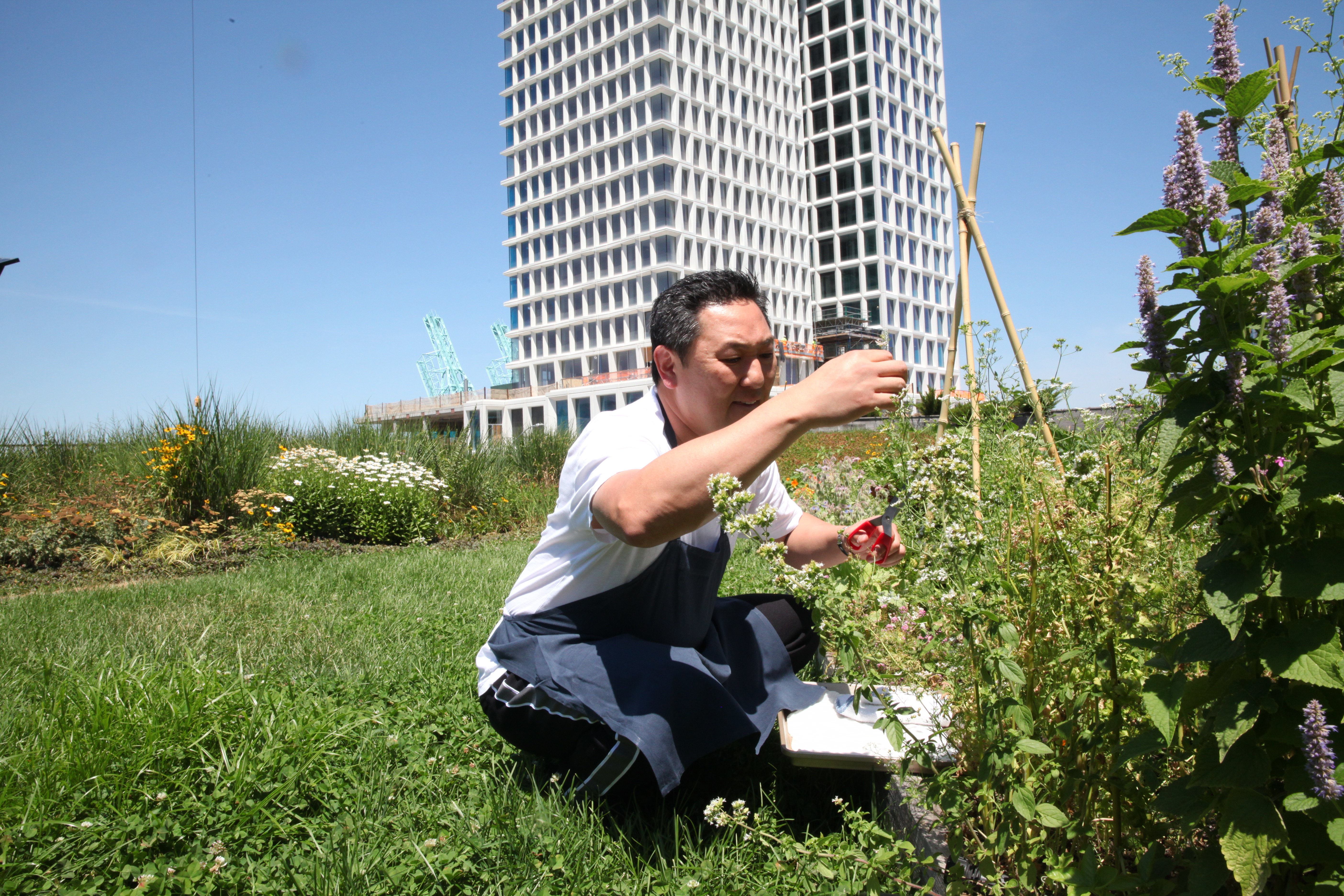
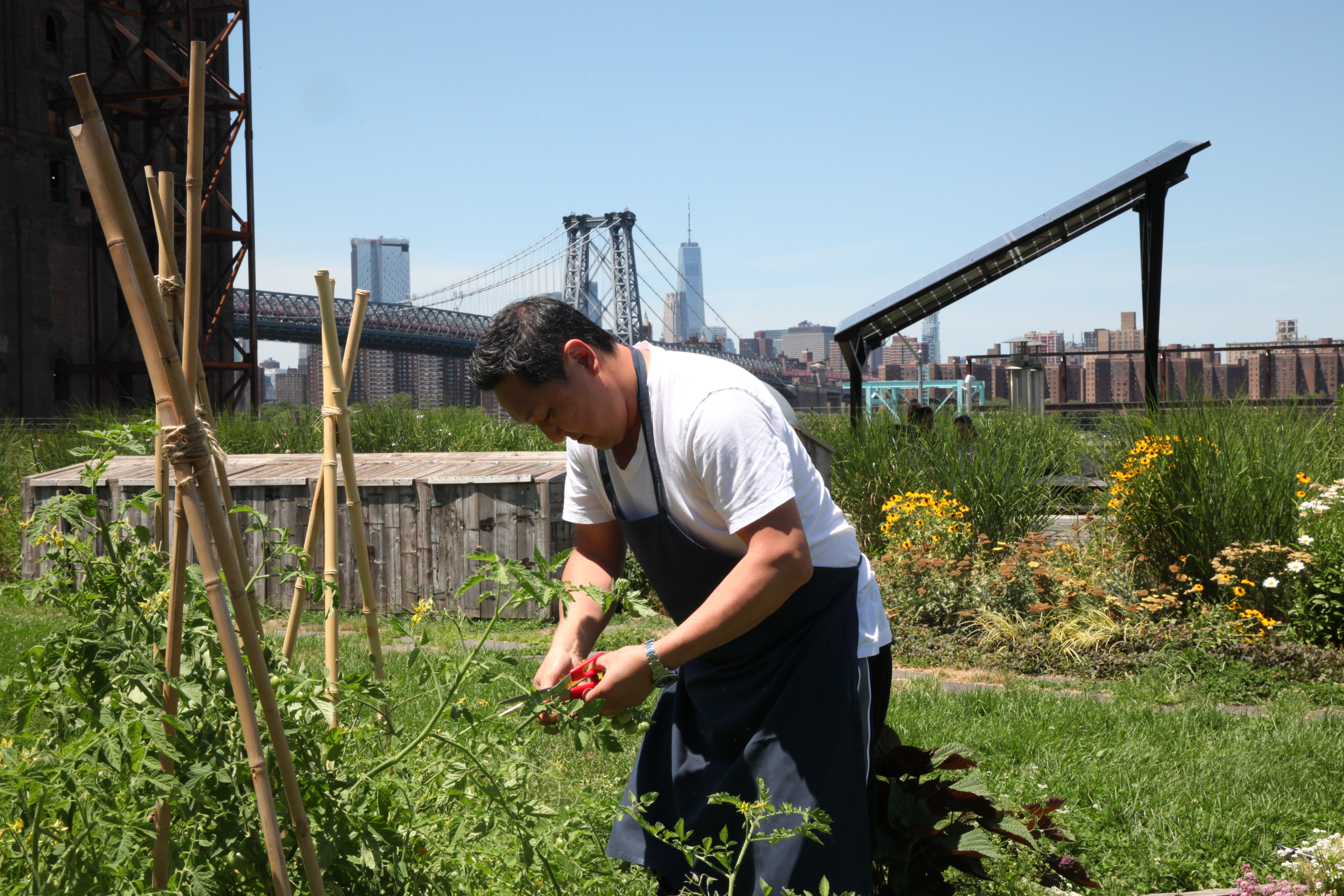
We follow chef Yoon onto the roof, where he picks onions, squash, cilantro, tomatoes, basil, and scallions. Back in the Test Kitchen, Yoon lays everything out, plus palm sugar, chiles, lemongrass, and some basics that he's brought, including herbs. Yoon chooses a black plate from our dish collection. "I'll use that as my reference," he says. "Sometimes I'll see something and be like, 'I can visualize a dish in there.' Other times it's a complete blank and I have no idea."
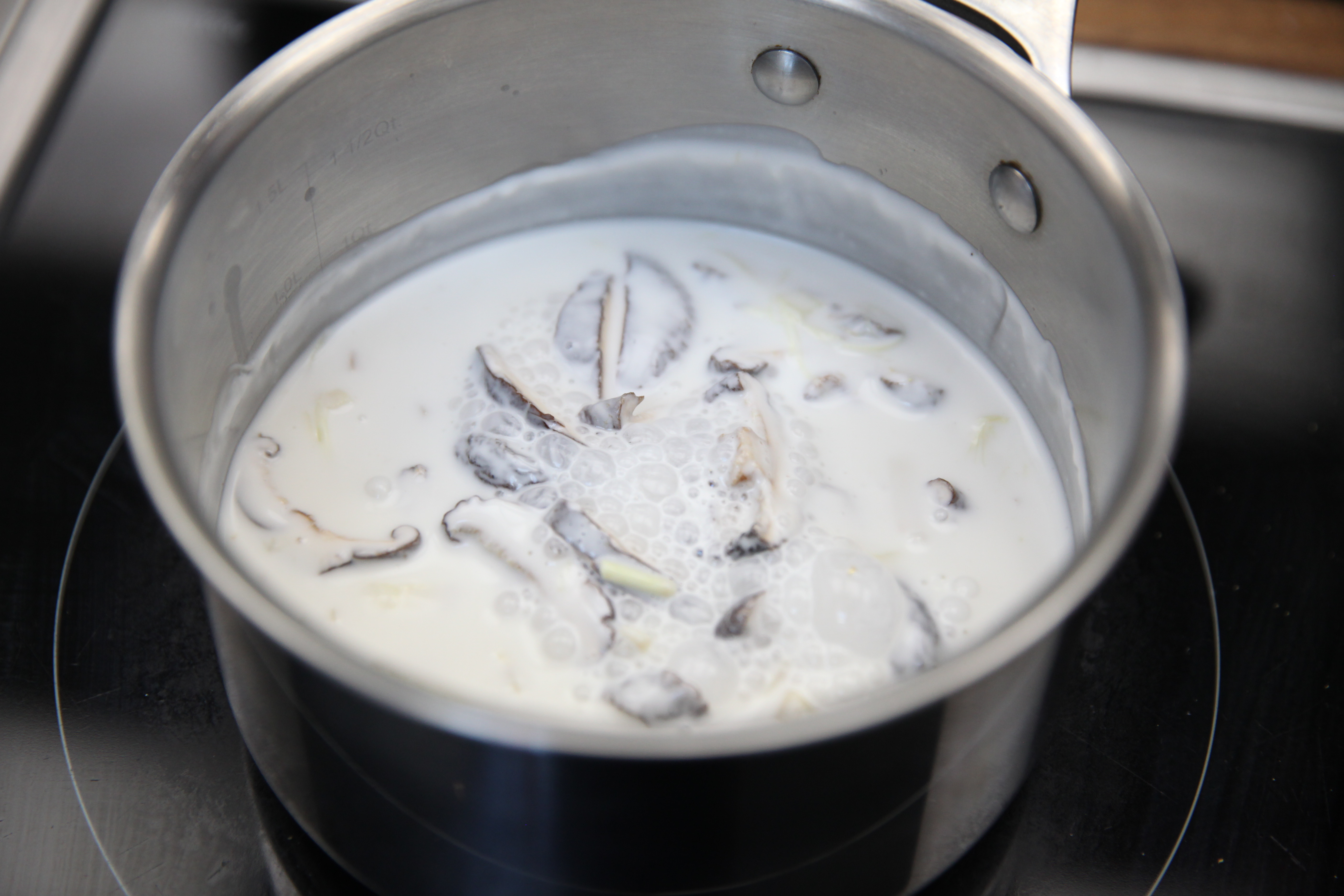
First, he makes a broth by simmering chicken stock, dried shiitake mushrooms, garlic, chiles, lime zest, and coconut milk. The mixture gets amped up with both ginger and galangal, which look similar but give different yet important qualities to the broth. Ginger, according to Yoon, adds more heat, while galangal is slightly sweeter and more floral, so together, the two lend a pleasant warmth to the broth.
Yoon uses a vegetable peeler to shave ribbons off of a dark brown cylinder of palm sugar, which he likes because it "adds flavor, not just sweetness," and he also adds a generous amount of fish sauce, tasting the mixture frequently. "I use a lot more fish sauce than soy sauce. Soy sauce covers or masks, but fish sauce, it's more sheer, so it goes so well," Yoon tells us.
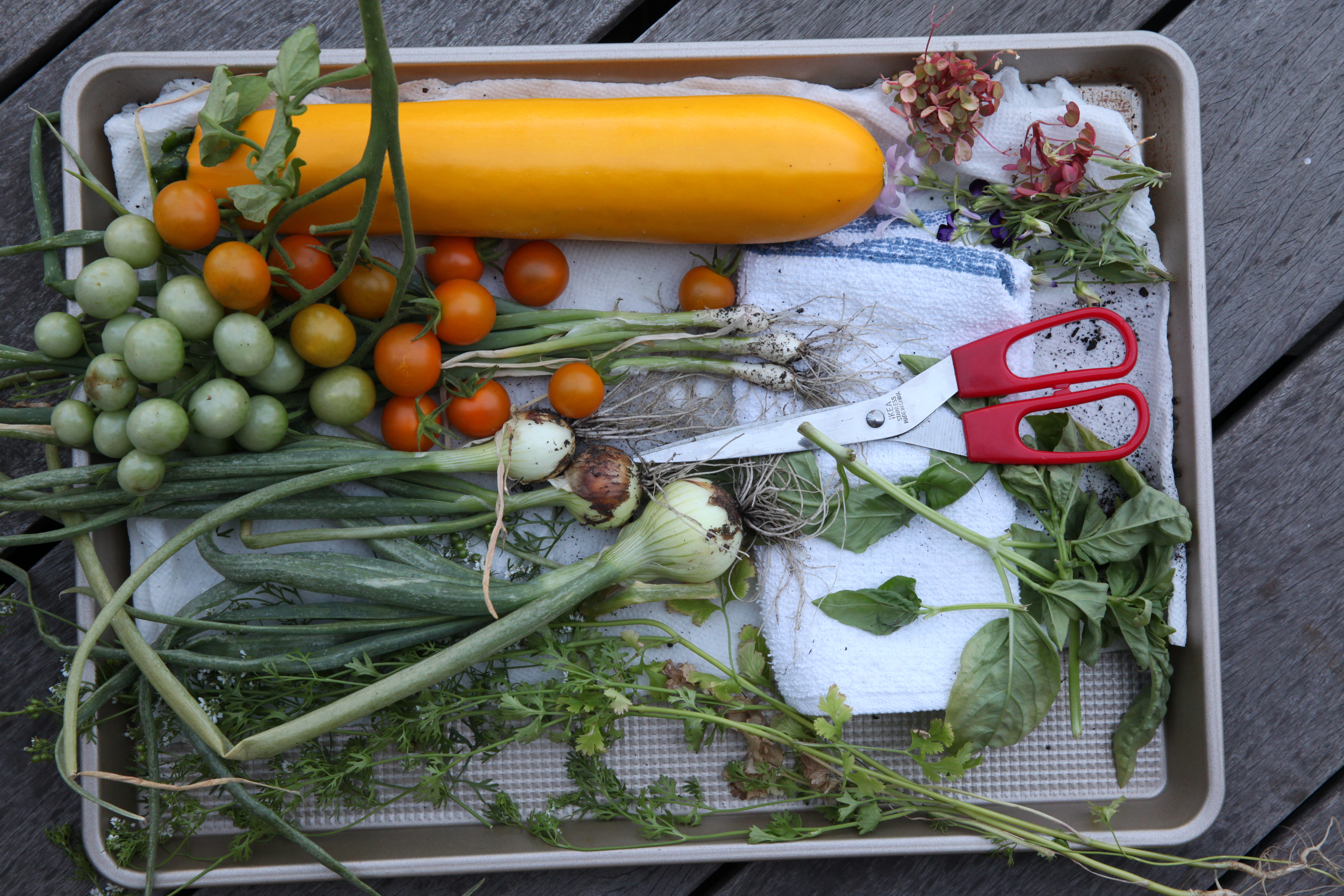
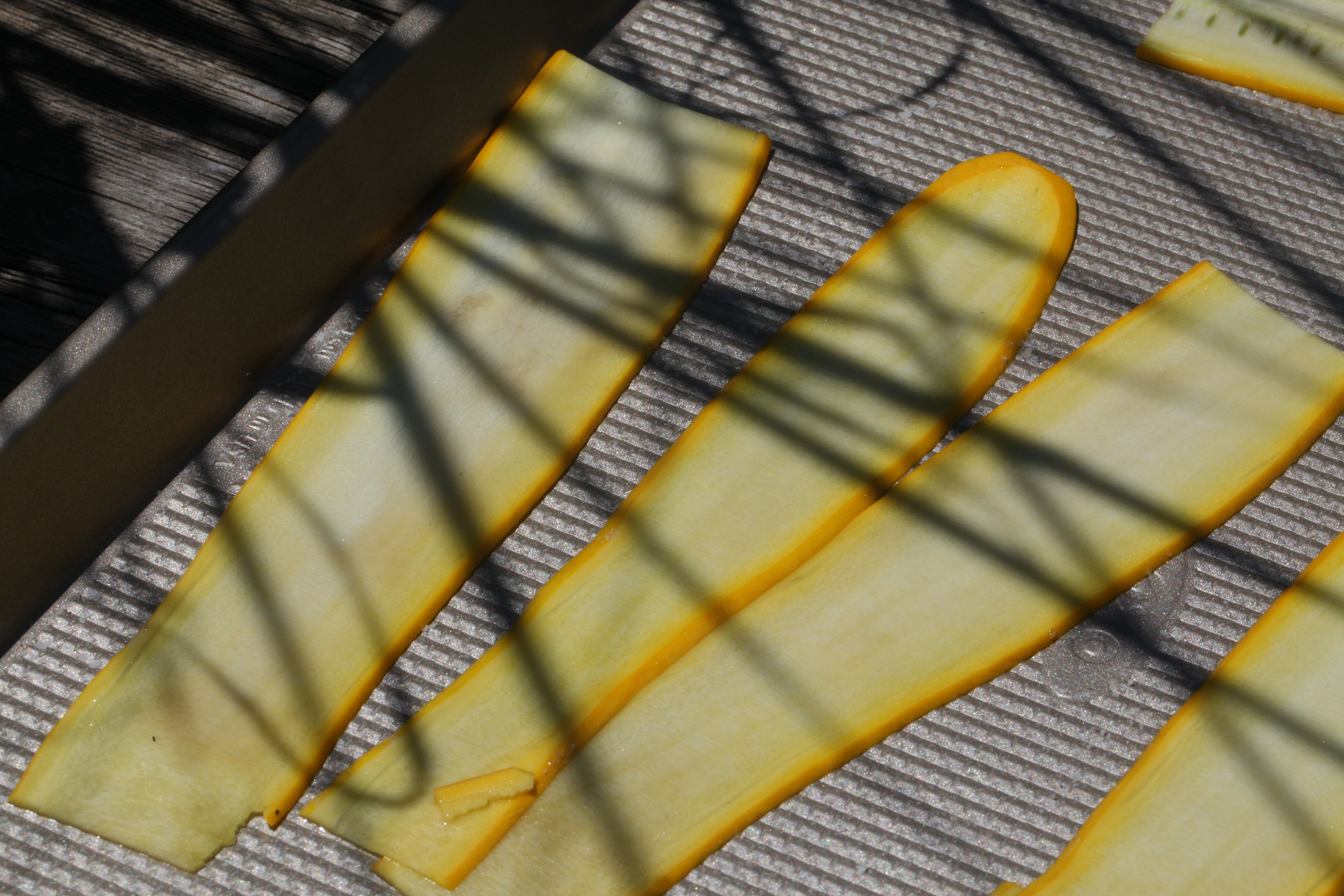
The broth cooks down, getting thicker and more flavorful, as he works through the rest of the dish. "I'm actively thinking. It's that rainbow wheel spinning," Yoon says. Having plucked perfect summer squash, he decides to cure them lightly in the sun. After slicing them thin, he lets the slices sit on a sheet tray in the sun until they have "the texture of being cooked." It's the perfect way to take advantage of harsh summer rays.
In a small bowl, he makes a simple tomato salad with fish sauce and sugar for a simple salad. Once that's done, he halves onions, which he'll char on a searing hot skillet.
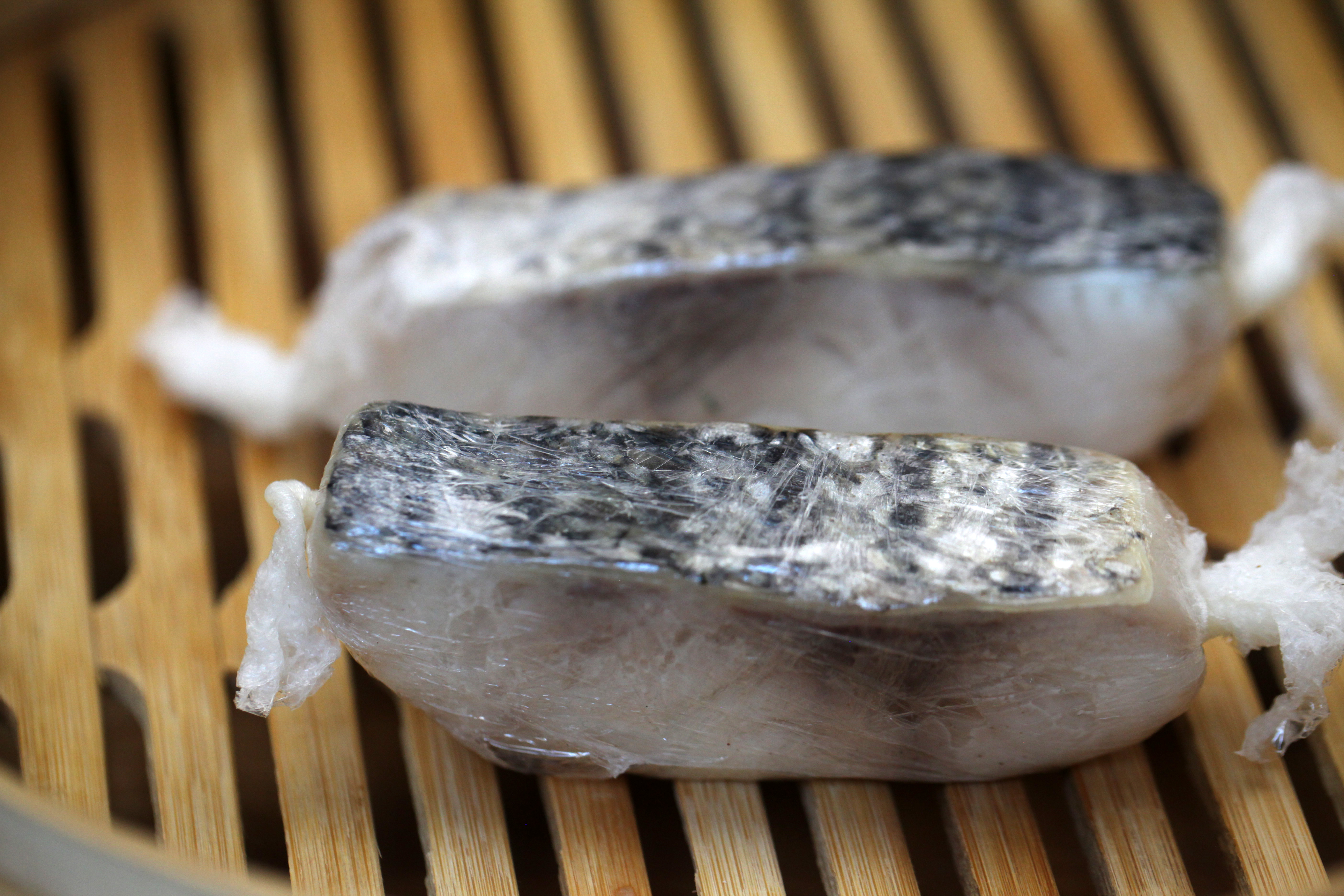
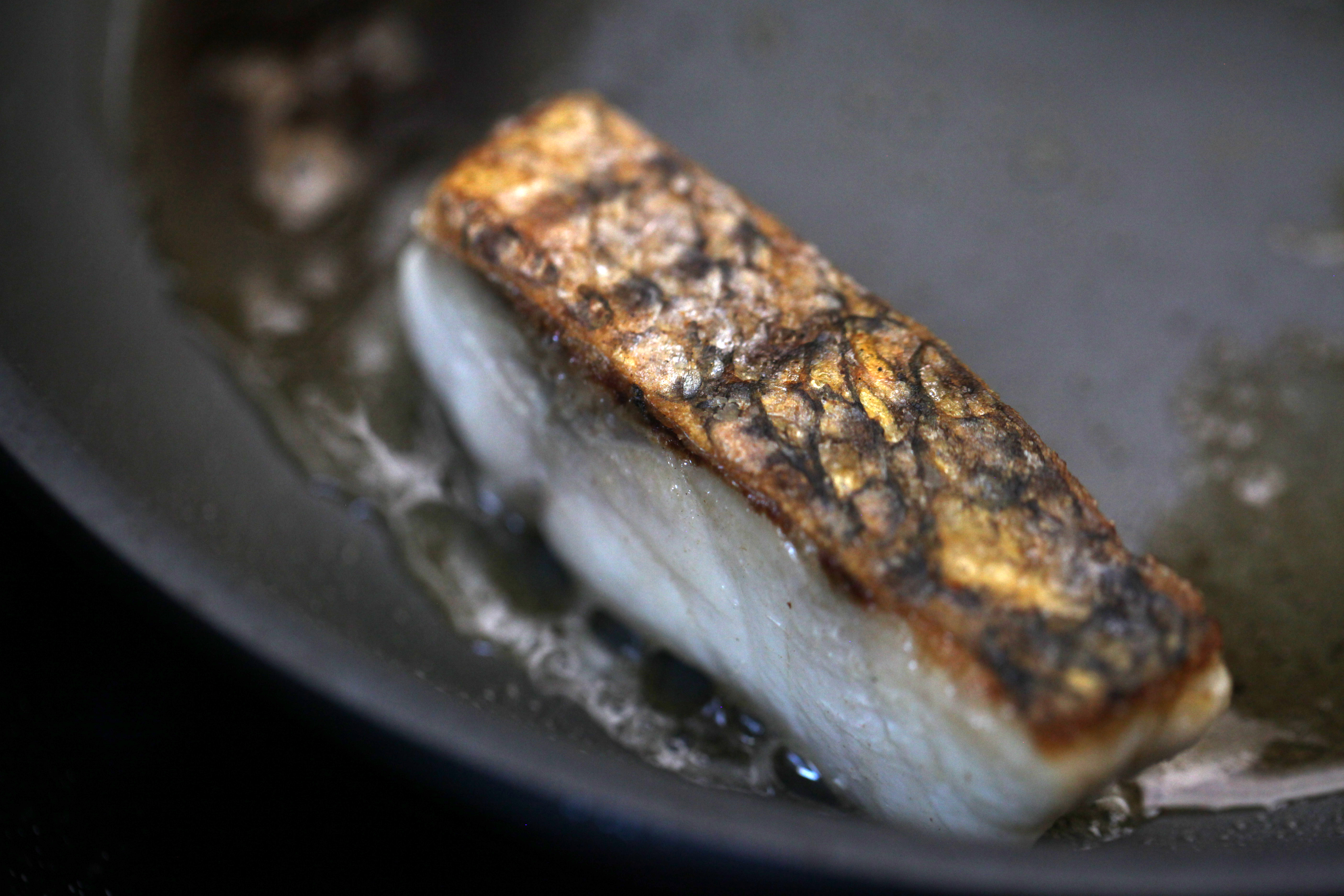
Yoon decides to steam the fish, crisp its skin, and serve it over the coconut broth with vegetables on top. He seasons the filets of sea bass, then wraps them tightly in plastic wrap, like a Tootsie Roll, to keep them from falling apart as they cook. "You'll make a little candy like this," Yoon says, before putting them in a steamer to par-cook for just three to four minutes.
After the fish firms slightly, Yoon unwraps each piece and lets them sit in the freezer until cool to the touch. Then, he'll cook them quickly with the skin side down in a pan with hot oil. "Especially with a delicate white fish, I like indirect heat first," he explains, "but I also like crispy skin. If you cook it [fully] in the pan, the fish will cook too hard, so it will get tough."
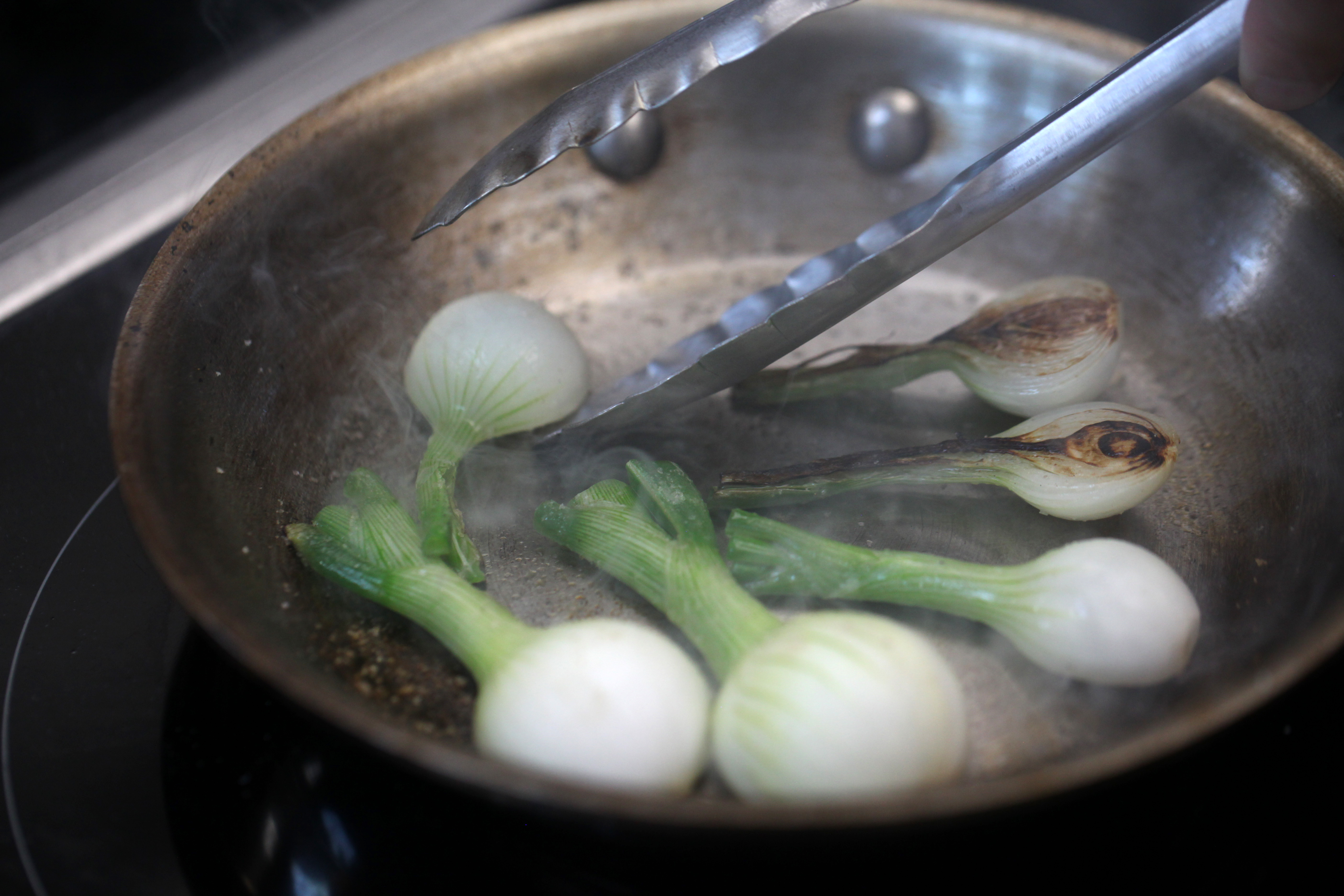
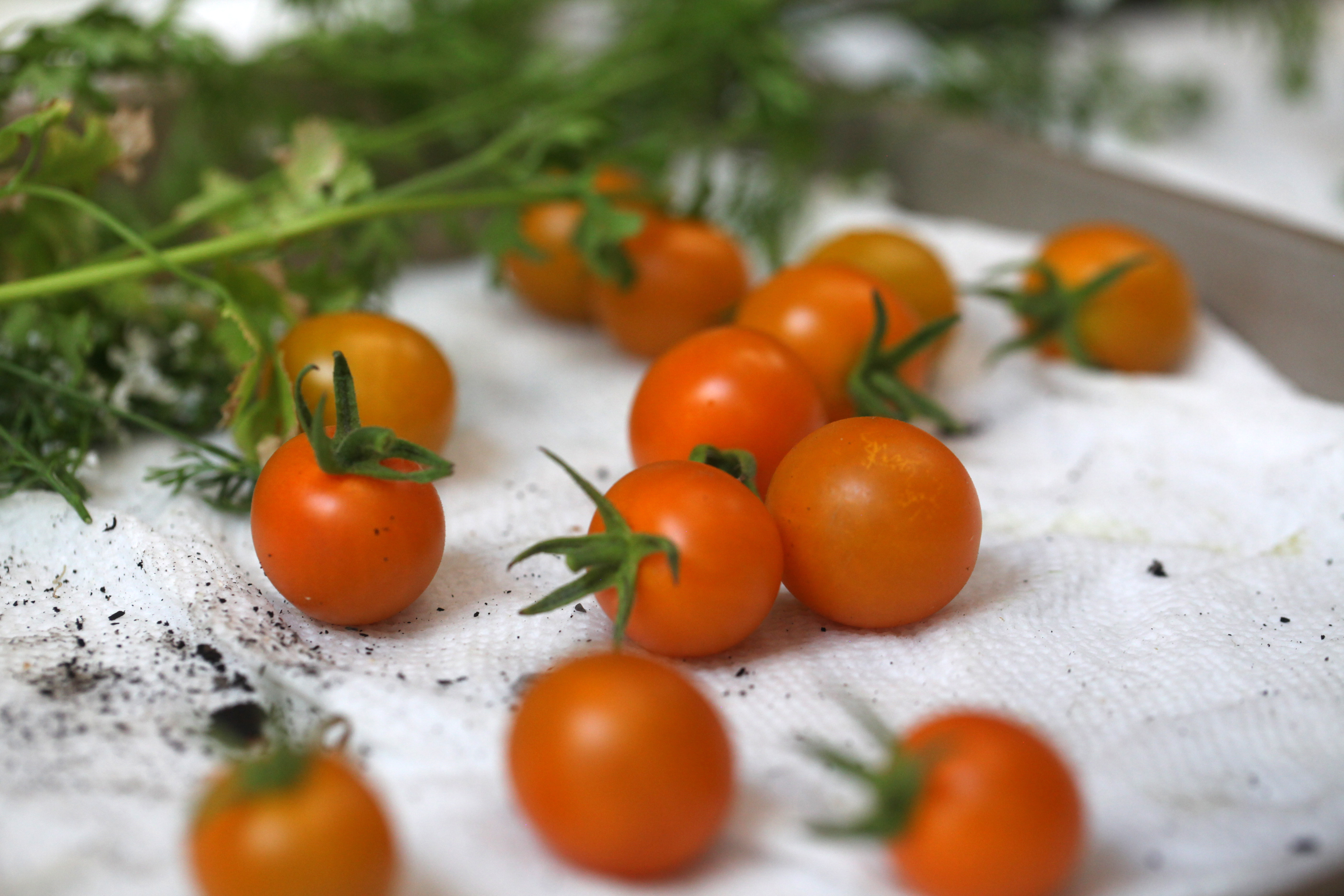
Here's where you can riff at home. The same coconut broth can work with chicken, or even tofu. If there's no steamed bass, any other delicate white fish will work fine. Can't find squash to cure? Zucchini is perfect—even eggplant might work with the same technique. Want soup instead? Cook the broth less, and it won't be quite as thick. Basically, let this sauce do the work for you and whatever you're craving, instead of feeling stuck to a rigid recipe.
Yoon places the fish and onions into the bowl, followed by a ladle of broth. He rolls up the cured squash and put it in the bowl, before finishing the dish with a spoonful of tomato salad. With Yoon's pristine plating, the finished dish looks fit for a fancy restaurant like Lukshon. That said, we're confident we can handle this technique at home, whichever direction the farmer's market finds take us.
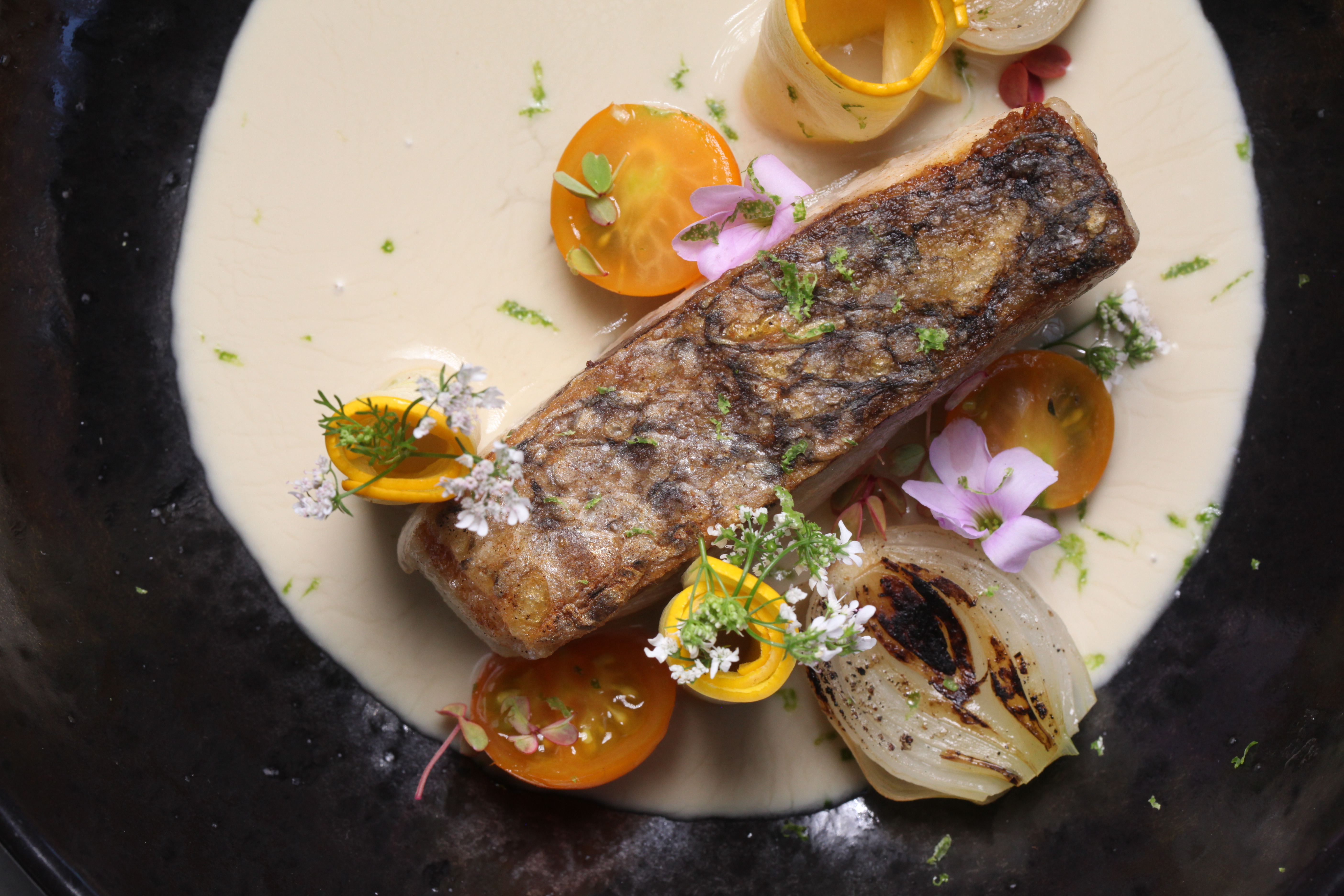
from VICE https://ift.tt/2ZBOrlf
via cheap web hosting
No comments:
Post a Comment